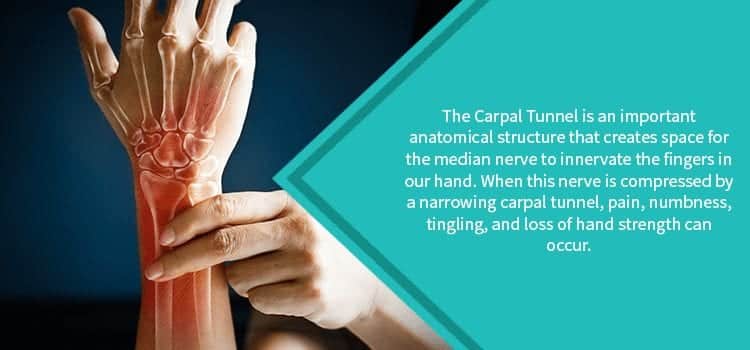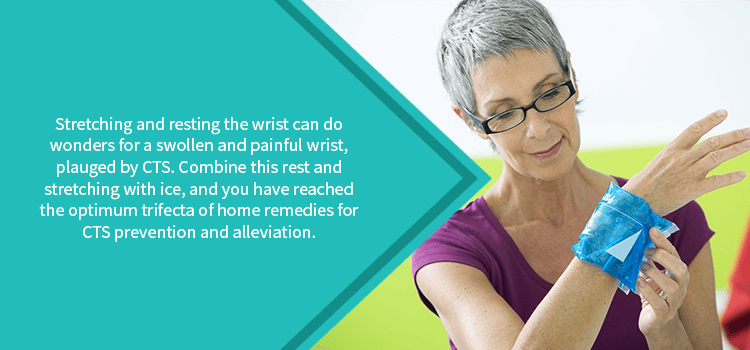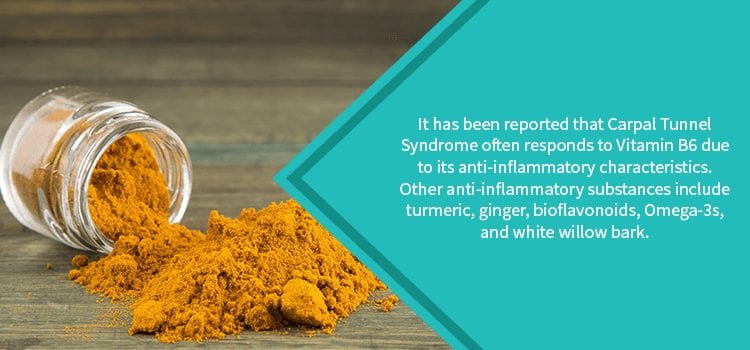The Dark & Narrow Carpal Tunnel
The Carpal Tunnel is not some elusive tunnel through a mountain somewhere. It’s actually an important anatomical passageway formed by the bones, ligaments, and tendons in our wrists. Why so important, you ask? This small passageway allows for the travel of not only essential ligaments, but also, your median nerve.
The Median nerve is crucial to the functioning of our hand. It is crucial in the fact that it feeds nerve signals to 3 and a half of the five fingers on our hand. This includes all of the fingers from the half of the ring finger to the crucial opposable thumb. If a narrowing carpal tunnel encroaches on this median nerve, the painful and restrictive symptoms of a pinched nerve can ensue.

Carpal Tunnel Syndrome
Simply put, Carpal Tunnel Syndrome (CTS) occurs when compression of the median nerve causes inflammation in the hand or wrist. This compression can occur due to a number of circumstances. Some of the leading causes of Carpal Tunnel Syndrome include:
- Repeated Awkward Motion: Flexion and extension while using the hand can lead to inflammation, especially when these hand positions are prolonged. One of the most common sources of prolonged flexion and extension results from typing. Construction, sewing, working on the hands and knees, and painting are just a few additional examples of activities that involve repetitive hand extension or flexion.
- Traumatic Injury: In addition, trauma to the hand and wrist can result in inflammation, swelling, and median nerve compression. This is especially prevalent with damage to the tendons and ligaments in the wrist. Injuries to the wrist are common results of falls. (When falling, we have an instinctive urge to reach out to catch ourselves with our hands.)
- Medical Conditions or Illness: There are a number of medical situations that lead to swelling in the body. Some of these conditions include diabetes, rheumatoid arthritis, osteoarthritis, kidney disease, and hypothyroidism. Over time, this swelling can cause median nerve compression and CTS.
- Pregnancy: Furthermore, hormonal changes during pregnancy can lead to edema, or the retention of water. This water retention naturally leads to swelling in the limbs and joints. And, as we know by now, swelling in the joints can lead to compression of the median nerve in the wrist.

Preventing The Pain
Although CTS is a fairly common consequence of our normal, everyday lives, we can take several preventative steps to avoid this problem.
- Ergonomics of the Workplace: Posture and desk organization can play a large role in the development of Carpal Tunnel Syndrome. Make sure you are sitting at a height that allows your elbows to bend at a 90-degree angle and leaves your wrists laying straight. They even make little pillows to go in front of your keyboard to help support a straight wrist. The internet is also chock-full of info on workplace ergonomics. Take some time to do some research.
- Take Breaks: Take short 3-5 minute breaks every hour or more to give those wrists a break. Use this time to stretch these wrists out.
- Watch Your Wrist: Stay cognizant of your hand and wrist position. If you see it starting to flex or extend, snap it (not literally) back into place.
- Wrist Brace : Proactively wearing a soft brace on your wrist can help keep the wrist in the correct position and cut down on the development of swelling and inflammation.
- Eat Anti-inflammatory Foods: What we put in our body can affect the development of inflammation and the joints. Foods such as leafy greens, whole grains, and fruits and vegetables contain vitamins and nutrients that prevent inflammation.

Dealing With Carpal Tunnel If You’ve Already Got It
Sometimes, Carpal Tunnel Syndrome cannot be easily avoided. Daily life is designed for constant use of our hands. And with many of us sitting in front of computers for a majority of the day, using our hands to type comes along with that.
Oftentimes our hobbies involve our hands as well. Tennis, sewing, cooking, gardening… Many things we love can lead to carpal tunnel pain. Some actions you can take to gain control of that CTS include bracing and splinting, stretches (especially yoga), anti-inflammatory medications such as ibuprofen and aspirin, and visiting your local chiropractor or acupuncturist. However, if you need immediate CTS relief, please seek the advice of your local orthopedist. A board-certified orthopedic surgeon can help you develop a regimen of treatment tactics to address your carpal tunnel syndrome–even if your condition doesn’t require surgery!

